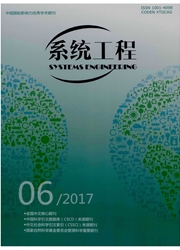

 中文摘要:
中文摘要:
为了使对城市道路网络交通状态的分析不至陷入交叉口或路段内部的交通状态分析,需从中现或宏观的角度去分析交通状态。本文在探讨路网状态特征参数的基础上,定义了“路段拥挤度”指标,通过建立城市交通网络模型,并基于浮动车(GPS)采集数据设计了路网交通拥堵时空演化量化分析的流程,采用“路段拥堵持续时间”“区域行程时间延误“区域拥堵路段数量”三个时空参数对路网交通拥堵状态的时空演化进行了量化研究。最后结合上海市浮动车数据与实际交通网络,得出了交通拥堵的延误时间和空间范围与拥堵程度大小的关系等结论。
 英文摘要:
英文摘要:
In order to keep the analysis of traffic status of urban road network from falling into a road intersection or within one section, it is necessary to analyze traffic status from a macro or meso point of view. Based on discussing characteristics parameters, an index of degree of section congestion is defined. By establishing the urban traffic network model, this paper designs a quantitative analysis flow of space-time congestion evolution of road network based on floating car (GPS) data. Then, it uses three space-time parameters to research modeling of traffic jams evolution of road traffic network. The parameters are duration of crowded section, delay of regional travel time and amount of regional congestion sections. According to floating car data and actual traffic network in Shanghai, we draw a conclusion that there is correlation between the delay time of congestion, space range and the degree of congestion.
 同期刊论文项目
同期刊论文项目
 同项目期刊论文
同项目期刊论文
 期刊信息
期刊信息
